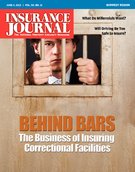Flexibility, Balance, Respect and Accessibility Are Important, Studies Find
There’s a lot of talk in property/casualty insurance circles these days about how the industry is going to replace the huge wave of baby boomers that are beginning to retire and will continue to do so into the next decade.
Much of the discussion about how to attract younger folks into the ranks of underwriters, sales producers, customer service representatives, account managers, claims adjusters and the myriad other positions available in the industry comes down to the question: What do millennials want?
Although the birth date range for millennials, sometimes called Generation Y or Gen Y, varies depending on which studies one reads, a Deloitte Consulting LLP report puts the range between 1982 and 1993.
“At approximately 75 million, the population of Gen Yers is the largest after Baby Boomers,” which number about 80 million, Deloitte said in its report, “Generational Talent Management for Insurers: Strategies to Attract and Engage Generation Y.”
Despite the recent economic downturn, industries across the board are looking at this generation, now mostly in their 20s, as the source for new blood and new ideas to replace workers who are beginning to age-out of the workforce in droves. This group also is influential due to its status as a wide pool of potential customers, Deloitte noted.
In its Gen Y report, Deloitte found that when it comes to employment, millennials differ significantly from baby boomers in that Gen Y values “long-term career development within a single organization.” The older generation on the other hand is generally noted for its “employer infidelity.” Deloitte added that in return for such loyalty to an employer, “Gen Y demands variety in experience and learning opportunity.”
Reaching Out
At least two organizations headquartered in the Midwest, The Griffith Insurance Education Foundation and the Ohio Insurance Institute (OII), have undertaken projects to both identify what millennials want and create awareness of and an interest in the many opportunities offered within the insurance industry.
The Griffith Insurance Education Foundation has published an extensive study on millennials related to how to recruit them into the insurance industry. In terms of what this generation is looking for in a work environment, Griffith’s “Report on Existing Millennial Research,” a whitepaper published in November 2011, found that among other things:
- Millennials want meaningful, satisfying and challenging work they will enjoy.
- Millennials appreciate collaborative work environments.
- Millennials seek employers who demonstrate social responsibility through workplace efforts.
Unsurprisingly, Griffith found that this generation excels at multi-tasking. As the Griffith report put it: Millenials are “extremely comfortable with technology and have the ability to use multiple devices simultaneously.” They also use “media as a primary forum for communication and informational purposes.”
One surprising gem of information Griffith discovered in its research is that — contrary to the general assumption that most people have a negative view of the insurance industry — “Gen Y basically doesn’t have an opinion yet at all,” said Jason Terrell, director of Insurance Education Institutes for the Griffith Foundation. “So there’s an opportunity to influence what they think. Once we can expose them to the industry, get them beyond that it’s just sales and realize that it’s a much larger industry, then we can see that needle starting to move.”
Terrell also said Griffith’s research has found that the primary motivating factors for millennials are “the same things that everybody else is looking for, such as
stability, salary, being able to provide for their family.”
A survey of millennials conducted this year by the Griffith Foundation is not ready for publication yet, but Terrell shared two questions asked in a random sampling of 634 millennials, along with the top three answers to each:
A. When considering a job that you would want, what are the three most important attributes which you consider?
Answers:
2. Benefits
3. Work/Life Balance
B. Which of the following types of work, if any, interest you?
Answers:
2. Helping others
3. Work that is challenging
Mitch Wilson, vice president of information and education at the OII, said his organization also has found through feedback from nearly 1,400 Ohio teachers who offer some form of insurance education or financial literacy instruction that salary is definitely a motivating factor for young people, but not the only one. Flexibility in the workplace, as well as the feeling that they are being appreciated for their contributions, also comes into play.
“They also, many of them, want to know that what they’re doing … is making a difference. They want to make sure that they are part of the picture of just really making things better,” Wilson said.
That outlook meshes well with the property/casualty insurance industry because in both personal and commercial lines, Wilson said, it’s all about helping individuals put their lives back together after a loss.”Something horrible has happened and you’re helping them. We feel that that can be a good fit with our industry,” he said.
Wilson said the OII in its research has been asking the question: “How do students choose a career? Not just insurance, but how do they pick a career? Because that’s really the big question — how do they decide what they want to do?”
The OII also wanted to find out where students go for research and advice on careers.
“A good number of them, obviously, do research online, without a doubt,” Wilson said. “That’s no surprise. But then we were trying to drill down and say, ‘Well, where online? Where are you going online?'”
The students’ research tended to be school rather than career oriented. It was, “‘Once I decided that I want to go to ABC University, then I would go on ABC University’s site and see what career options they have,'” he said.
OII also asked students to whom they would go to talk about careers. Teachers, it turns out, have a big influence, Wilson said, in addition to parents and other adult family members.
“What we found is, if they have a course that they like and a teacher that they like, they’ll talk to that teacher about, ‘what do you think, what careers are out there,'” he said.
“We don’t ask them anything about insurance. … We’re just asking, ‘who do you go to?’ Some of them said peers. The biggest one, from our perspective, really was adults — parents or family members or teachers,” Wilson said.
The Griffith Foundation has been providing high school teacher training in insurance education since 1985, Terrell said. “What we’ve seen throughout the years … is teachers asking more and more for career information on the insurance industry because their students are more and more interested,” he said.
Reasons for Optimism
A study by McKinsey & Co. and The Risk Foundation found that despite challenges — such as a poor reputation among the general public and lack of awareness among young people about careers in insurance — the industry has several things going for it.
The report, “Building a Talent Magnet: How the Property and Casualty Industry Can Solve Its People Needs,” noted several causes for optimism. One is that “the industry’s risk management jobs have the qualities — stability, a good work/life balance, intellectual challenge, strong professional development possibilities, and the chance to make a difference — that young jobseekers want.”
The industry also is poised to take advantage of layoffs in other financial services organizations, such as banks, to access “a pool of talent more receptive to learning what a career in insurance has to offer,” the McKinsey report stated.
In addition, the insurance industry “has scale: it employs more than one million people in the United States.”
“Finally, in the battle for talent, the industry has a hidden resource: a strong network of schools of risk management and professional associations that can provide a platform for launching an effort to re-make its image,” according to the McKinsey report.
Negatives
- 88 percent of Chartered Property Casualty Underwriter (CPCU) members are aged 40 or older.
- 70 percent of company adjusters are aged 40 or older. The number of insurance professionals who sat for their CPCU exams in 2006 declined to fewer than 23,000, a more than 55 percent decline when compared to 1992.
- The number of professionals taking AIC (Associate in Claims) examinations also has decreased steadily.
Deloitte: “Generational Talent Management for Insurers: Strategies to Attract and Engage Generation Y; http://www.deloitte.com.
Poor Reputation
“In a 2008 survey, the industry’s reputation, as measured by admiration, trust, good feeling and overall esteem, ranked in the bottom quartile of all industries. … None of the 11 major U.S. carriers in the survey escaped this negative perception.” McKinsey & Co.: “Building a Talent Magnet: How the Property and Casualty Industry Can Solve Its People Needs;” http://www.mckinsey.com.
Topics Talent Property Training Development Property Casualty Market Casualty
Was this article valuable?
Here are more articles you may enjoy.


 10 Highest Class-Action Settlements in 2025 Eclipsed $70B Total: Duane Morris
10 Highest Class-Action Settlements in 2025 Eclipsed $70B Total: Duane Morris  Warburg Mulls $1 Billion Sale of London Insurance Broker McGill
Warburg Mulls $1 Billion Sale of London Insurance Broker McGill  Update: Verizon Says Service Restored After Thousands Affected by Outage
Update: Verizon Says Service Restored After Thousands Affected by Outage  Florida Lawmakers Ready for Another Shot at Litigation Funding Limits
Florida Lawmakers Ready for Another Shot at Litigation Funding Limits 


